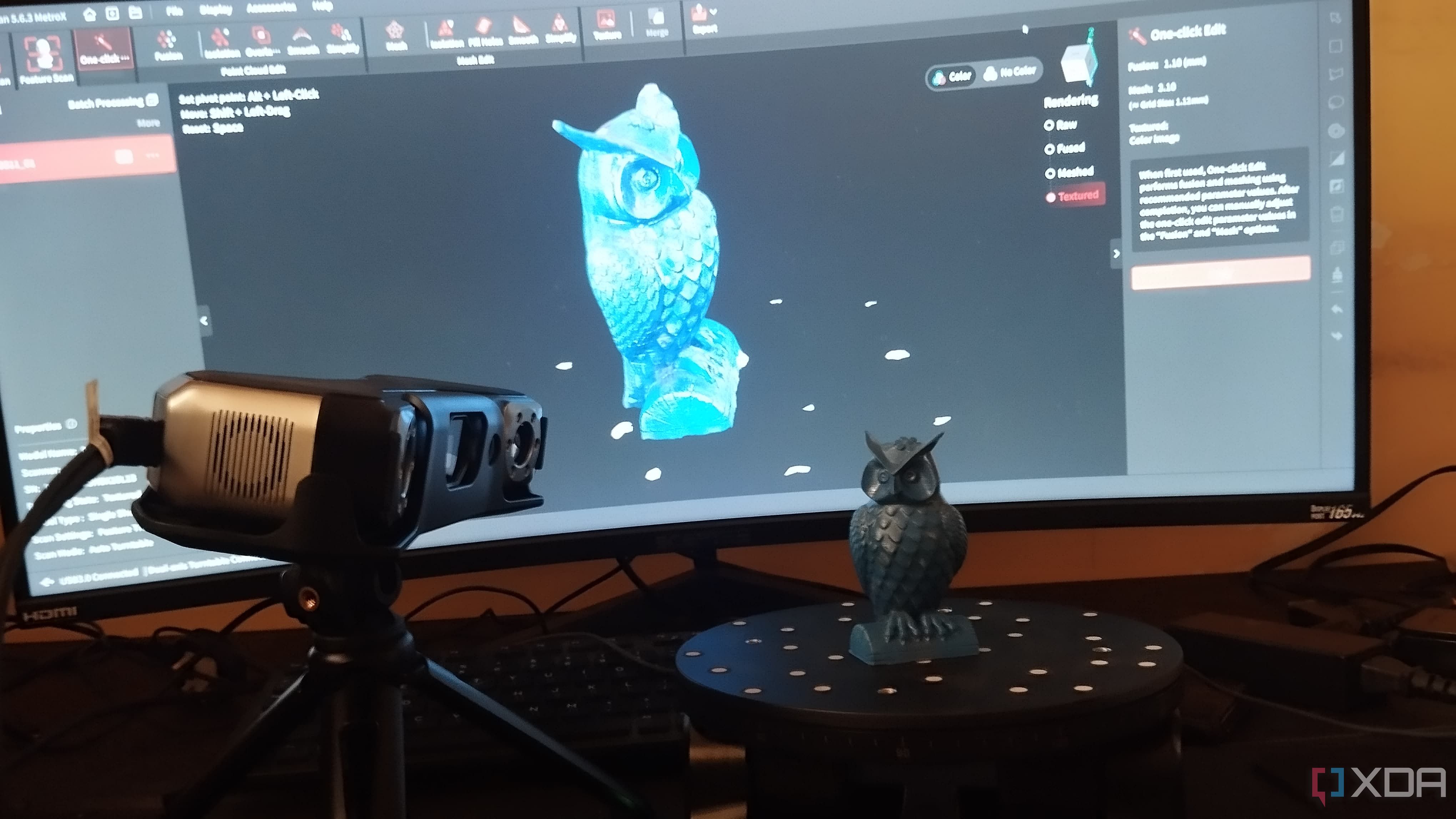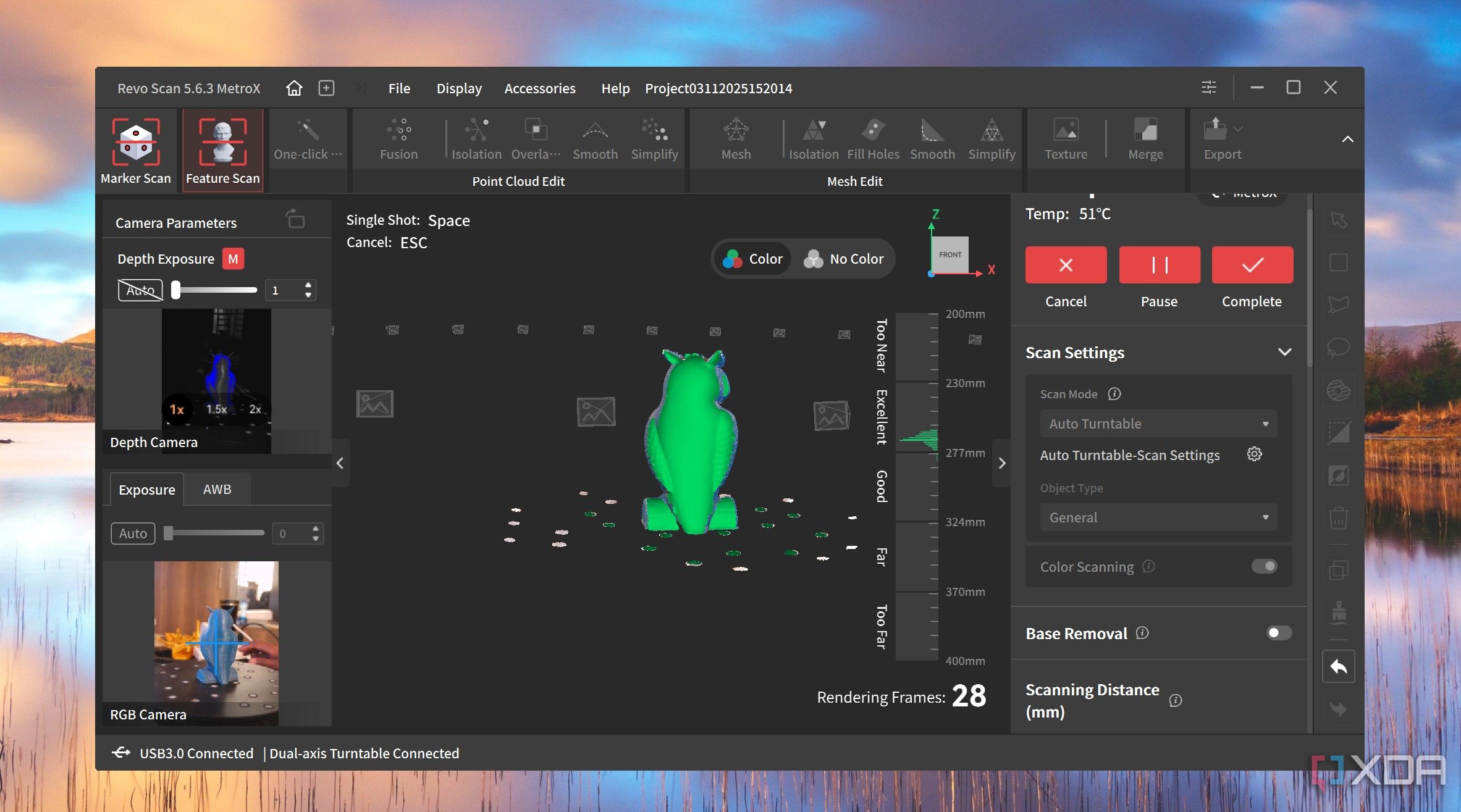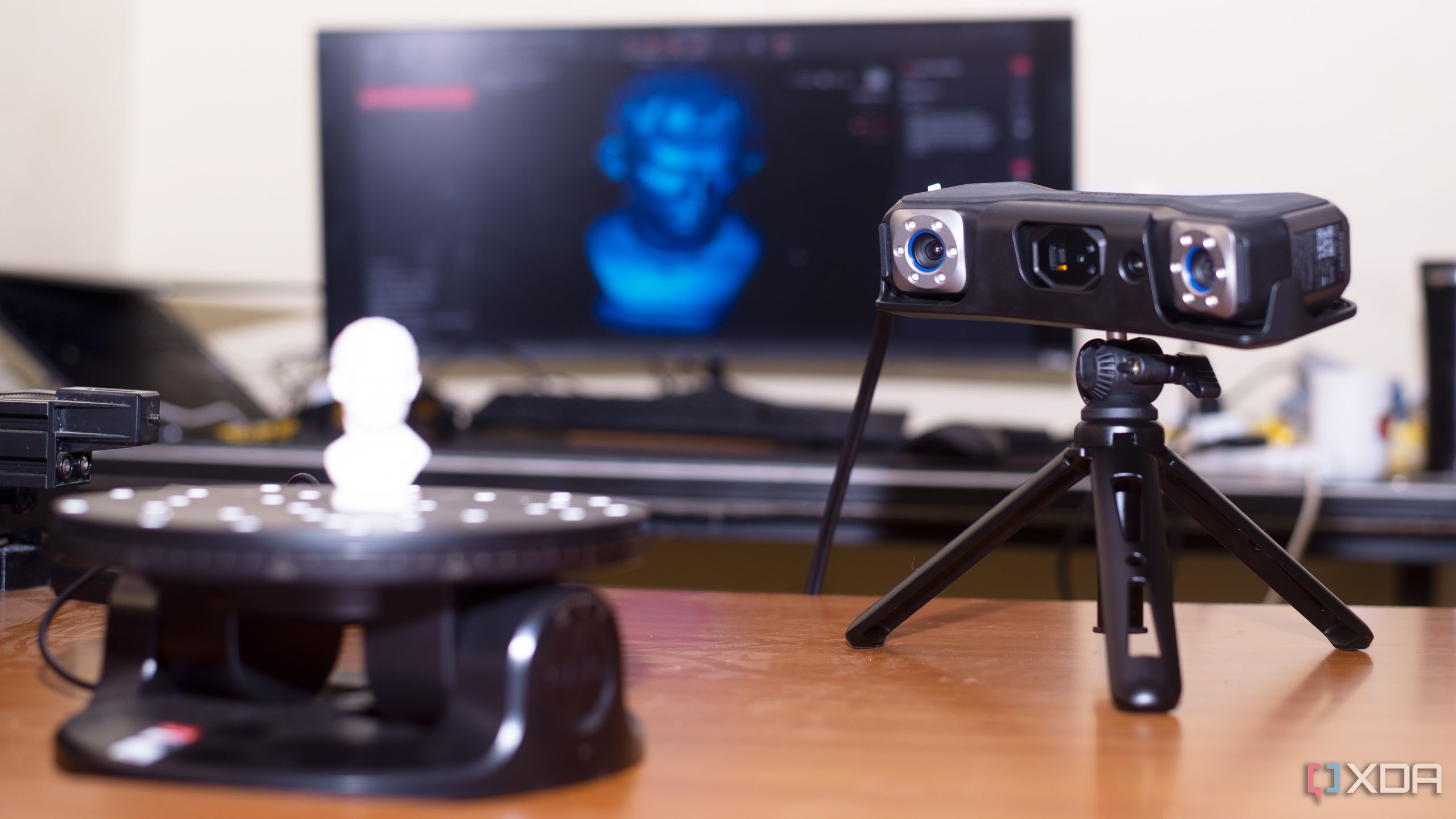A few years ago, 3D scanners were primarily viewed as tools for high-end industries or specialized laboratories. They were expensive and often too complex for the average user. However, with advancements in technology, the process has become easier, thanks to cheaper 3D scanners and user-friendly software. Now, you can even get a good hand-held 3D scanner for less than $1000, and everyone, whether they are tinkerers or not, can use it to create their designs. There are also good 3D scanner apps for smartphones that work incredibly well.
In addition to its use in high-end industries, people are finding clever ways to utilize a 3D scanner in their day-to-day lives. Actually, I tried using it to prepare my 3D printing files, and I was amazed. Below are some of the interesting applications of 3D scanning that you should be aware of.
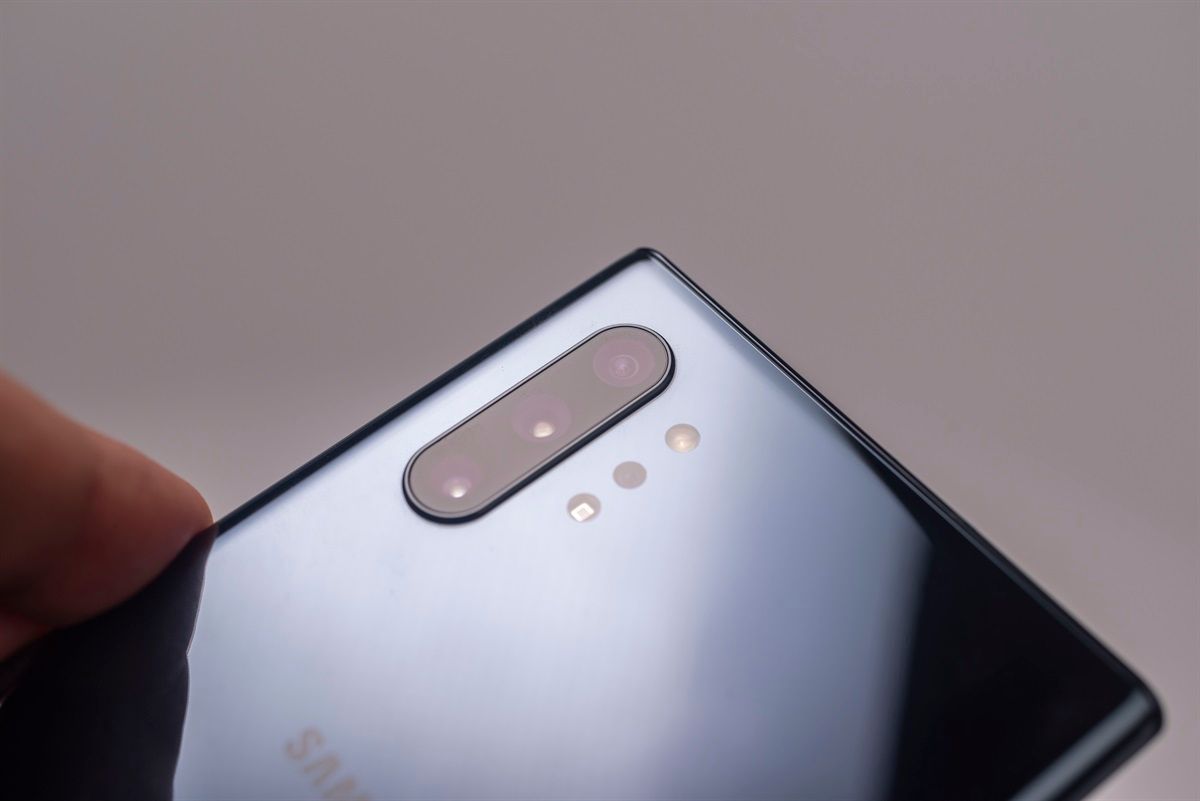
Related
Galaxy Note 10 3D Scanner app is here along with Samsung’s Discord integration
Samsung announced that Galaxy phones will have exclusive Discord integration and that the Galaxy Note 10 will have a 3D scanner app. Both are now live.
5
It is utilized in reverse engineering
Recreate already existing products and parts
The engineers use a 3D scanner to scan existing parts or products for analysis, redesign, or replication, particularly when CAD files are unavailable. For example, suppose you have a machine part that accidentally breaks, and you don’t have the replacement part available online or in your local store. In that case, you can simply scan it, generate a 3D model that you can import into CAD software, refine it, and slice using a 3D printer slicer, and then print. This is also an excellent option for recreating discontinued parts. Additionally, factories are utilizing it to reverse engineer the parts of machines that have been in use for many years, which can be expensive to replace with new ones.
4
Useful in education and interactive learning
3D scanning helps students understand complex subjects
Teachers are using 3D scanning technology, combined with 3D printers, to make learning fun and hands-on. Instead of students learning by checking pictures in textbooks or videos, teachers can scan items like bones, shells, or specimens, then 3D print them and show the students. This approach is more engaging than just staring at diagrams.
Although you can still create 3D designs through 3D modeling, it often takes significantly more time than when using 3D scanning. An interesting example is the Vermont 3D printing contest, where middle and high school students make history through 3D printing by creating 3D models of historical buildings and 3D printing them. This increases students’ engagement and problem-solving capabilities.
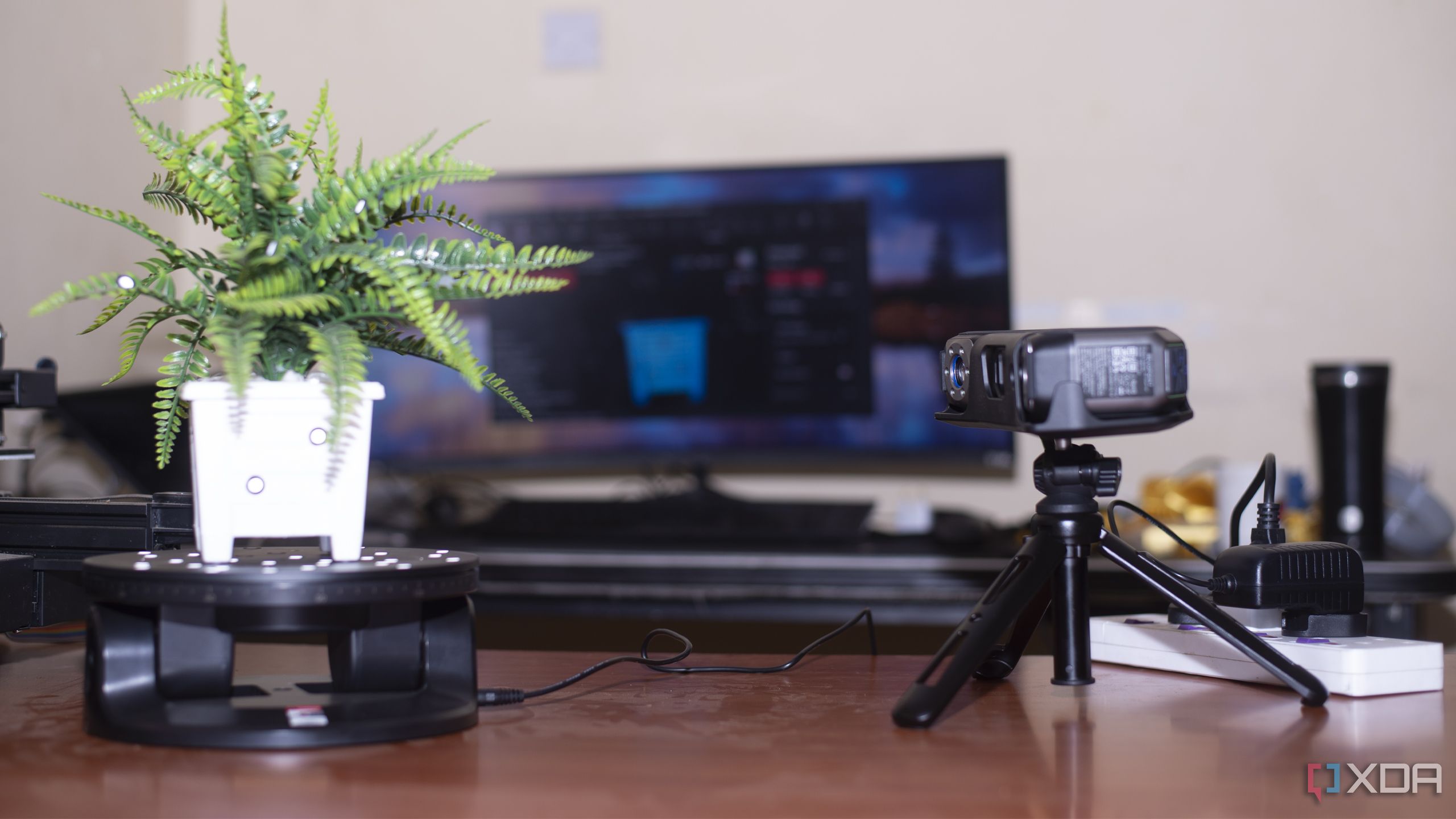
Related
3 Reasons why I use Metrox 3D Scanner to create detailed 3D models for 3D printing
MetroX is a powerful 3D scanner that can help you capture 3D scans of objects and even clean them up. Get to know the main reasons why I like it.
3
Speeds up the product design process
Preparing prototypes of the already existing products is easy
With 3D scanning, you can speed up the entire design process, from concept and prototype to final design approval. You can capture the geometry of the products, create high-quality 3D models, and share them with your team to make decisions. The 3D models can be edited and improved within a 3D modeling program without having to start from scratch, which saves countless hours. It also eliminates the costs associated with traveling and shipping, as people can evaluate the designs remotely, streamlining feedback loops. With 3D scanning, it’s easier to prototype existing products, especially when the original designs aren’t available.
2
Create prostheses, braces, and aligners
Medicine is benefiting from 3D scanning
Traditionally, preparing prostheses or orthopedic braces involved a lengthy and hands-on process. You can think of plaster molds, multiple fittings, and a lot of back and forth, which is time-consuming, sometimes uncomfortable, and prone to inaccuracies. However, with 3D scanning, medical professionals can quickly capture detailed measurements of a patient’s body. Whether it’s a limb or foot, the 3D scanner can capture precisely in just a few minutes and prepare a digital model that is then used in designing the prosthetic that fits perfectly.
There are also filaments available that are flexible, such as TPU, and are strong enough to withstand impact while remaining comfortable, making them ideal for 3D printing prostheses and other wearable products. Additionally, dentists and orthodontists utilize intraoral 3D scanners to capture images of the mouth and stitch them together to create a digital 3D model of the mouth. The 3D models are then used to plan for braces and aligners, and this is more effective, comfortable, and faster than traditional methods.

Related
How to make a 3D model from a 2D image in Blender
If you’re looking for a quick and easy project in Blender, or just need to create a 3D model from a 2D reference image, then we’ve got you covered!
1
Useful in architecture and engineering construction
3D scanning expedites the design and build workflow
Instead of measuring or using outdated blueprints, architects can scan the entire buildings, complex structures, or even construction sites, then generate detailed 3D models, which are then 3D printed. Moreover, in the design phase, 3D scans enable architects and engineers to overlay new plans on top of existing conditions. This helps ensure that the beams, pipes, walls, and other components do not interfere with one another before construction begins.
When construction is underway, 3D scanning plays a critical role in monitoring progress, comparing on-site work against design models, and identifying errors early on. Those constructing can take updates and send them to the responsible team members for review and feedback.
3D scanners are becoming popular
3D scanners are becoming increasingly accessible to everyone. Whether one uses a handheld 3D scanner or a smartphone with a scanning app, they can be utilized to create digital models for various use cases. The above five applications are just a small glimpse into the potential of 3D scanning. As you begin to experiment with this technology, you will realize it’s not only practical but also incredibly fun to use. Of course, just like 3D printing, the beginning might seem overwhelming, and that’s normal, but once you start getting the hang of how it works, everything becomes easier.



